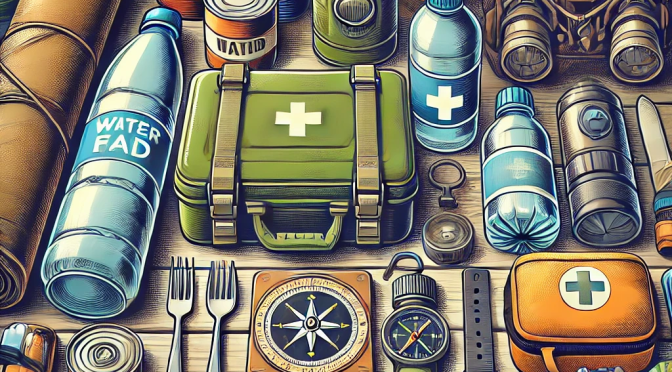In an unpredictable world, preparedness is not just a choice but a necessity. Prepping ensures that individuals and families can endure emergencies such as natural disasters, power outages, or even societal disruptions. Here, we outline the key factors and supplies essential for effective prepping.
1. Food and Water Supplies
The cornerstone of any prepping plan is ensuring access to food and water. Consider the following:
- Non-perishable Foods: Stockpile canned goods, dried fruits, nuts, pasta, rice, and freeze-dried meals. Aim for at least three months of food supplies per person.
- Water Storage: Store at least one gallon of water per person per day for drinking and sanitation. Consider water purification methods, such as:
- Water filters
- Purification tablets
- Boiling as a last resort
- Food Rotation: Regularly check and rotate your supplies to avoid expiration.
2. Emergency Shelter and Clothing
In some scenarios, staying at home might not be possible. Be prepared with:
- Shelter Materials: Portable tents, tarps, and sleeping bags.
- Seasonal Clothing: Durable and weather-appropriate clothes, including:
- Thermal layers for winter
- Rain gear for wet conditions
- Fire-starting Tools: Matches, lighters, and fire-starting kits to stay warm and cook food.
3. First Aid and Medical Supplies
Health emergencies can escalate without proper tools. Maintain a comprehensive first aid kit with:
- Bandages, antiseptic wipes, and gauze
- Over-the-counter medications (pain relievers, anti-diarrheal, etc.)
- Prescription medications (at least a 30-day supply)
- Tools like tweezers, scissors, and a digital thermometer
Consider training in basic first aid and CPR to handle emergencies confidently.
4. Communication and Navigation Tools
Reliable communication is critical during an emergency:
- Radios: A battery-powered or hand-crank NOAA weather radio for updates.
- Two-way Radios: Ideal for staying connected if cell networks fail.
- Maps and Compass: Learn basic navigation skills in case GPS becomes unreliable.
- Backup Power: Portable chargers or solar panels for essential devices.
5. Self-defense and Security
Personal safety is paramount. Consider:
- Basic Self-defense Tools: Pepper spray, personal alarms, or firearms (if legally permitted).
- Home Security: Reinforced doors, motion sensor lights, and security cameras.
- Emergency Plans: Develop and practice evacuation and communication plans.
6. Financial Preparedness
Economic stability during a crisis is often overlooked. Ensure:
- Emergency Cash: Keep small bills in case ATMs or credit card systems are down.
- Important Documents: Secure digital and physical copies of passports, insurance policies, and medical records in waterproof containers.
7. Mental and Emotional Resilience
Crisis situations can take a toll on mental health. Stay prepared by:
- Stress Management Tools: Books, games, and hobbies to pass the time.
- Community Networks: Build relationships with neighbors and local groups for mutual support.
- Preparedness Drills: Practice scenarios with family members to build confidence and reduce panic during real emergencies.
Final Thoughts
Prepping is a continuous process that requires regular assessment and updates. By focusing on these key areas and tailoring your preparations to your specific needs and location, you can build a robust plan to navigate uncertain times with confidence.
